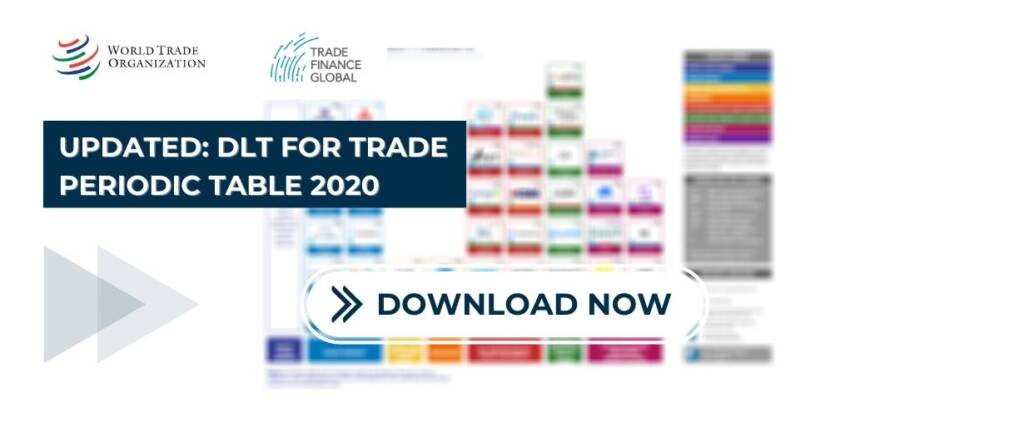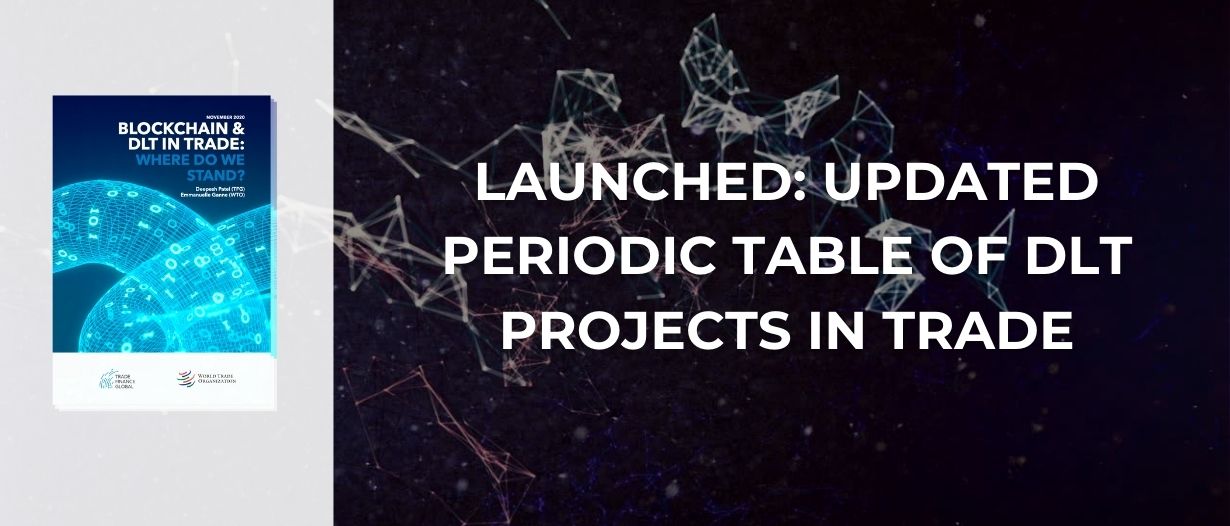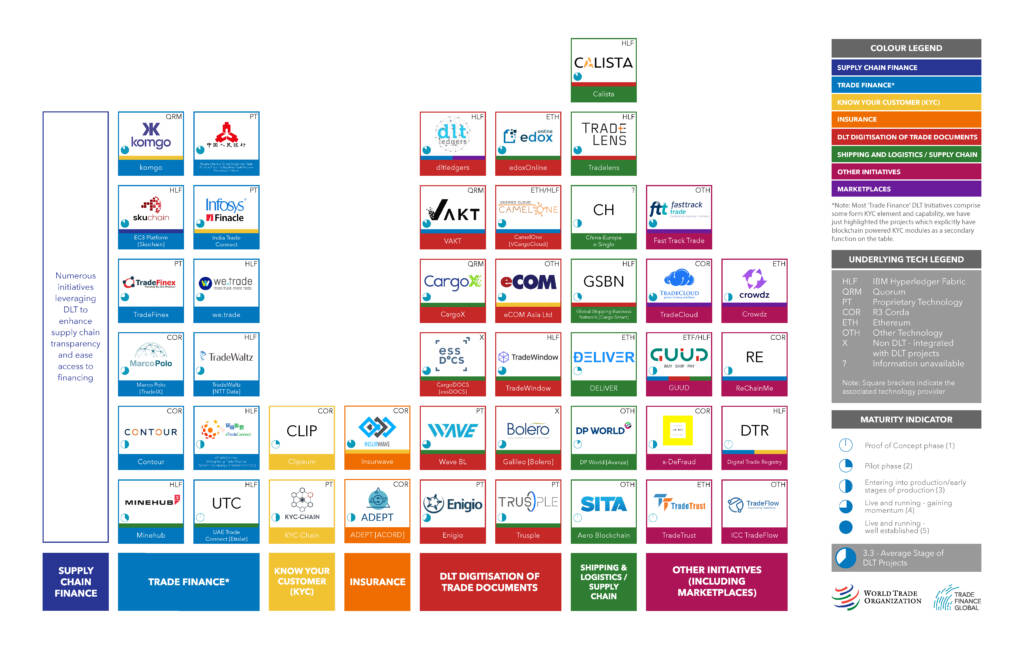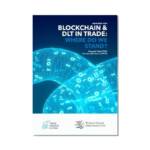DLT in trade is usually used for two primary purposes:
1) track-and-trace, to enhance transparency on how goods are being processed and,
2) digitalization of trade processes.
What is DLT?
From a technical standpoint, the terms ‘DLT’ and ‘Blockchain’ are not interchangeable. However, using them this way is the convention in a vast majority of the non-technical literature, project descriptions, and communities that exist today. To avoid unnecessary discrepancies, this paper will follow the convention of using the terms DLT and Blockchain interchangeably.
Track-and-trace itself has three main purposes. First, it can be used to increase transparency for customers and build trust. This is done by providing the customer with insight into DLT-verified records of the steps that a particular product took to reach their hands. Second, it can be used to prove the authenticity of particular products, combating the trade of counterfeit goods along the way. Third, it can be used by large corporations to quickly track and identify tainted products, allowing the corporations to identify potential hazards and resolve them quickly.
While the track-and-trace portion of DLT in trade is a fruitful and important aspect of the broader industry, it is not the focus of this publication. Instead this publication, similar to the previous edition, will be primarily focused on the digitalization side of DLT in trade, examining how it can be used in pursuit of the digitization of trade documentation, digitalization of trade processes, and the exchange of trade data.
Digitalization or Digitization?
There is an important distinction to make between the terms ‘digitization’ and ‘digitalization’. Digitization is the process of converting information into a digital format, in which the information is organized into bits. Digitalization is the use of digital technologies to change a business model.
Periodic Table of Blockchain & DLT Projects in Trade – What’s different?
Since the original rendition of the Periodic table of DLT in Trade Projects was published in December 2019, a lot has changed for the industry. Some of the projects that were profiled in the original version have fallen aside and others have risen from the ashes to take their place. A few, like Contour (previously, Voltron), have progressed from a consortium to an incorporated legal entity, enabling them to provide the full commercial services that they were previously unable to. Most of the projects, however, have made steady progressions towards their goals of a digitalized industry.
The maturity indicator, represented by the circles shown in the bottom-left corner of each project on the Table, indicates the level to which each project has progressed at the time of writing, with 1 representing the proof of concept (POC) stage and 5 representing live and running (well established). At the end of 2019, the average stage of maturity across all the projects was profiled to be 2.3 out of 5. Today, nearly a year later, the average maturity has risen to 3.3, placing them between the early stages of production and being live and running.
2019 Periodic Table of Blockchain and DLT Projects in Trade, including a ‘stage’ that the projects and companies are at (Version 1)
Version 1 – Initially published on the 1st November 2019. Source: ‘Blockchain & DLT Projects in Trade: A Reality Check’, by ICC, TFG, WTO, 1st November 2019 – view here. https://www.tradefinanceglobal.com/blockchain/periodic-table/
Customs Operation and Single Windows – Why integrating customs matters
The future of trade digitalization relies on interoperability and the development of end-to-end solutions. Any digital process will only be as strong as its least digitized link. For many international trade systems this means integrating customs. While several governments are testing or considering using DLT for their customs operations and single windows, most projects remain at a conceptual or piloting stage.
The most advanced project is Cadena in Latin America, which serves the very specific purpose of mutual recognition of Authorized Economic Operators. There have also been a handful of proofs of concepts and pilot projects involving customs, such as the NAFTA/CAFTA Proof of Concept run by the US Customs and Border Protection office, the EU DG Taxud ATA carnet Proof of Concept (PoC) conducted with the International Chamber of Commerce (ICC), the Korean export clearance project and Shanghai’s ‘Single Window’ project are some of the notable projects. However, many of these projects either seem to have made limited progress or have not made any notion of their progress available to the authors or the public – and are therefore not featured in this revised periodic table.
What is an Authorized Economic Operator?
An authorized economic operator (AEO) is defined by the World Customs Organization (WCO) as a party involved in the international movement of goods, in whatever function, that has been approved by, or on behalf of, a national customs administration, as complying with WCO or equivalent supply chain security standards. Criteria to qualify as an authorized operator shall be specified in a WCO members’ law, regulations, and procedures. Authorized operators include manufacturers, importers, exporters, brokers, carriers, consolidators, intermediaries, ports, airports, terminal operators, integrated operators, warehouses, and distributors.
However, things are moving. Various customs authorities are now integrated with the Tradelens project and there are several other DLT digitization of trade documents projects that are integrated with customs including Avanza which has been integrated with Dubai Customs. While these are significant positive developments, it is not enough. If the industry wishes to continue pushing the envelope on trade digitalization, they need to begin to see more movement along this front. As noted above, a digitalized trade process is only as strong as its least digitized link.
DLT Supply Chain Finance Initiatives: A growing popularity
In the original version of the Periodic Table of DLT in Trade, various Supply Chain Finance (SCF) projects leveraging DLT were featured. The revised periodic table includes a SCF category but does not list specific projects. Indeed, the fast increasing number of DLT Supply Chain Finance initiatives makes it difficult to provide a comprehensive and up-to-date picture.
This does not mean that DLT-based solutions for Supply Chain Finance are unimportant. Quite the opposite. DLT is vastly interesting for SCF as it addresses a myriad of challenges faced in the space, not the least of which is a greater transparency into a supplier’s operations.
Many SCF projects also go beyond merely SCF to address other issues. For example, HaloTrade has adopted a multi-faceted approach, tackling not only SCF but also issues related to sustainability. Linklogis, another supply chain finance initiative, branches beyond the first tier of suppliers that SCF typically looks at and instead seeks to also target suppliers of the supplier in their model of deep-tier supply chain financing. China’s cross-border trade finance platform launched by the State Administration of Foreign Exchange in April 2019, extends to customs to facilitate export accounts receivable financing. Other SCF initiatives target specific geographic segments of the market, such as Factorin, which focuses on the Central and Eastern European Market.
Explained: The Structure of the Periodic Table
The current rendition of the Periodic Table of DLT in Trade Projects has sectioned the projects into seven categories: Supply Chain Finance, Trade Finance, Know Your Customer (KYC), Insurance, DLT Digitization of Trade Documents, Shipping and Logistics / Supply Chain, and a miscellaneous category for projects that do not neatly fit into any of the other sections. These categories, while useful to easily grasp the differences between the various projects, induce a simplification that may not reflect the full complexity of each project. However, classifying projects in one or another category is not always a straightforward task.
Similar to the previous edition, each project is presented with its underlying technology as well as an evaluation of its current stage of maturity. As was always intended with the Periodic Table structure, this updated version, in comparison to the previous edition, helps to show the ever-evolving progress that has been made in the industry to date.
























![KYC[DLT] - The hottest KYC projects in trade finance (yes, they use blockchain!)](https://www.tradefinanceglobal.com/wp-content/uploads/2020/10/KYCDLT-The-hottest-KYC-projects-in-trade-finance-yes-they-use-blockchain-150x150.jpg)










